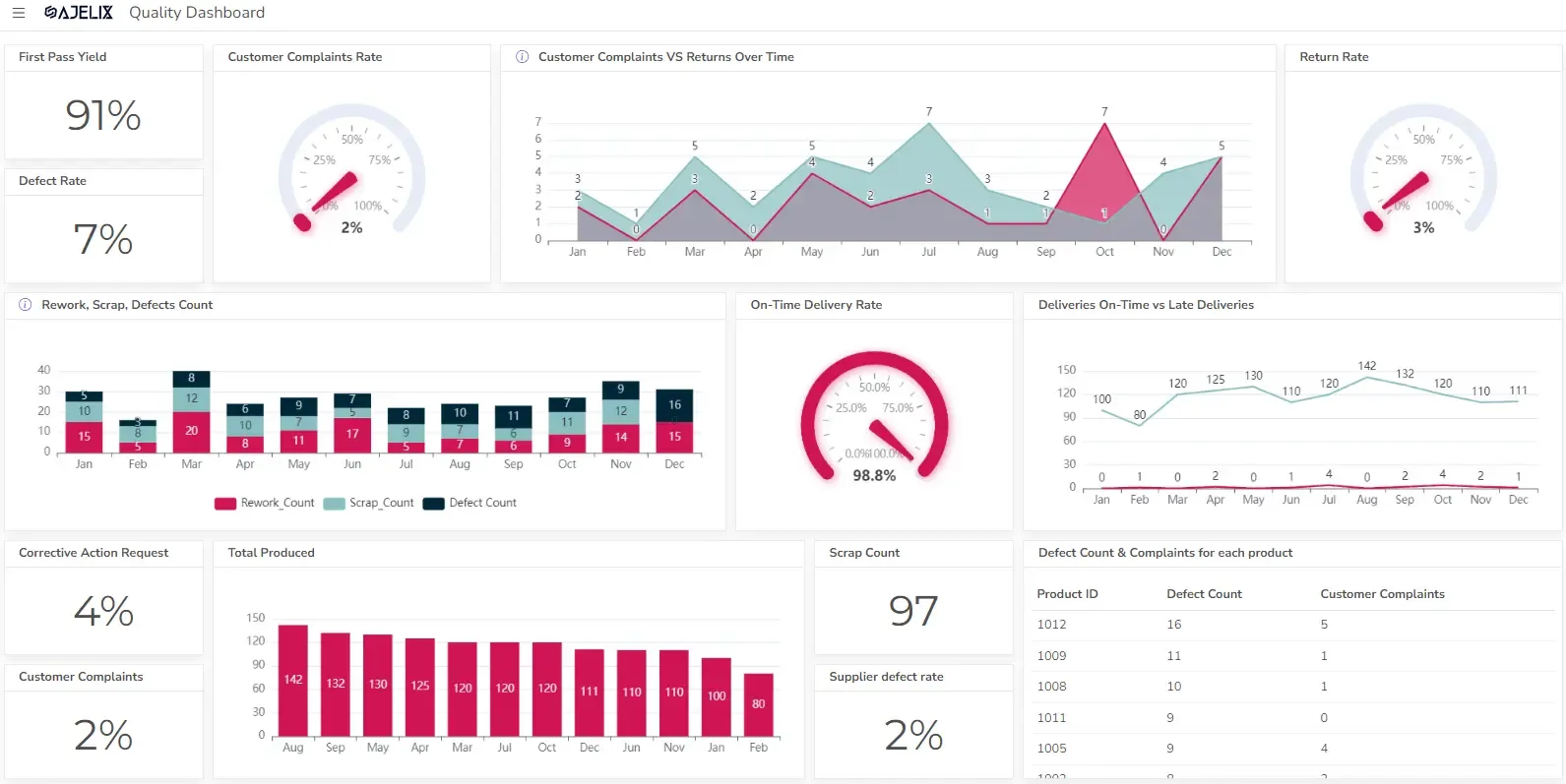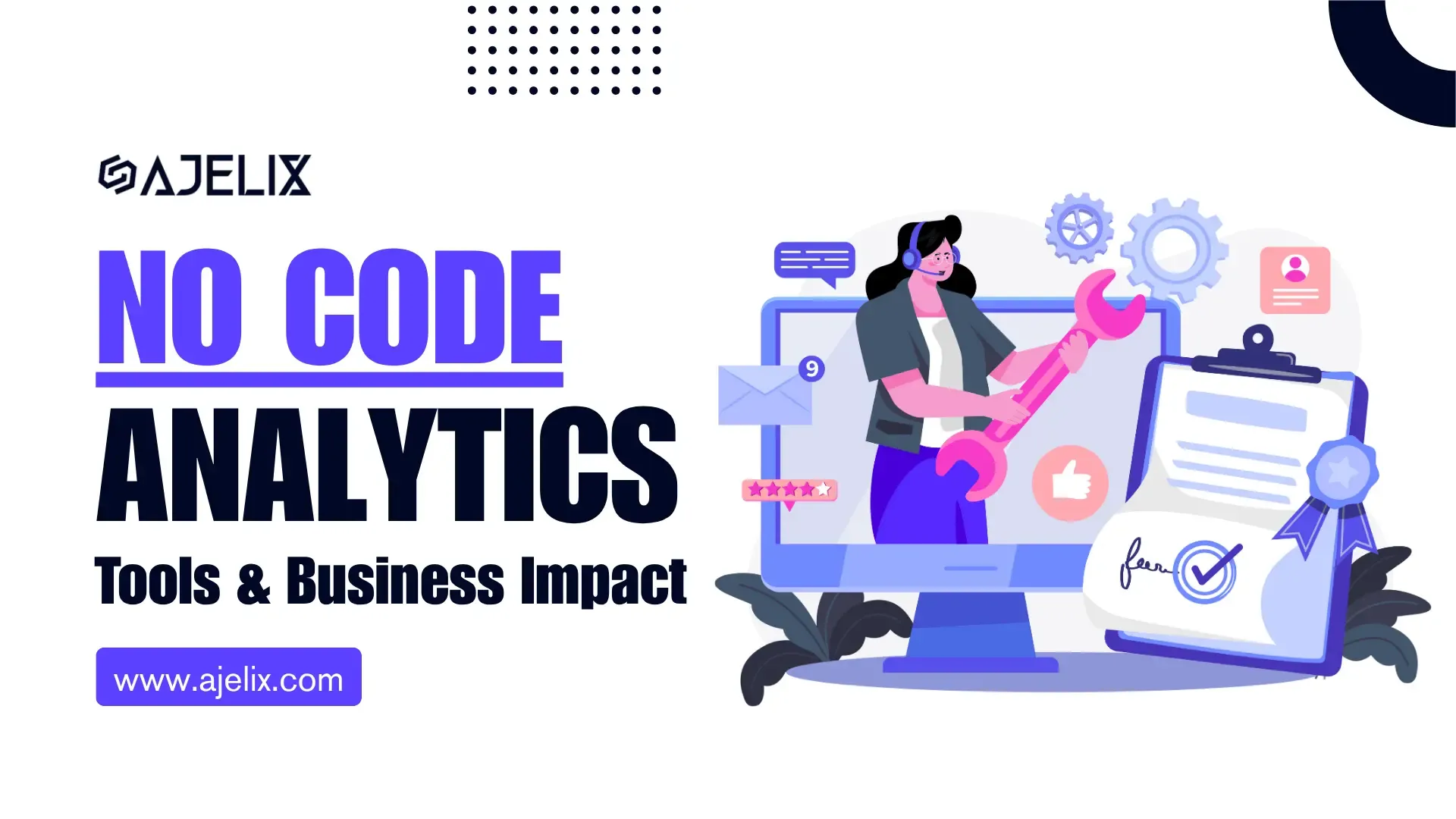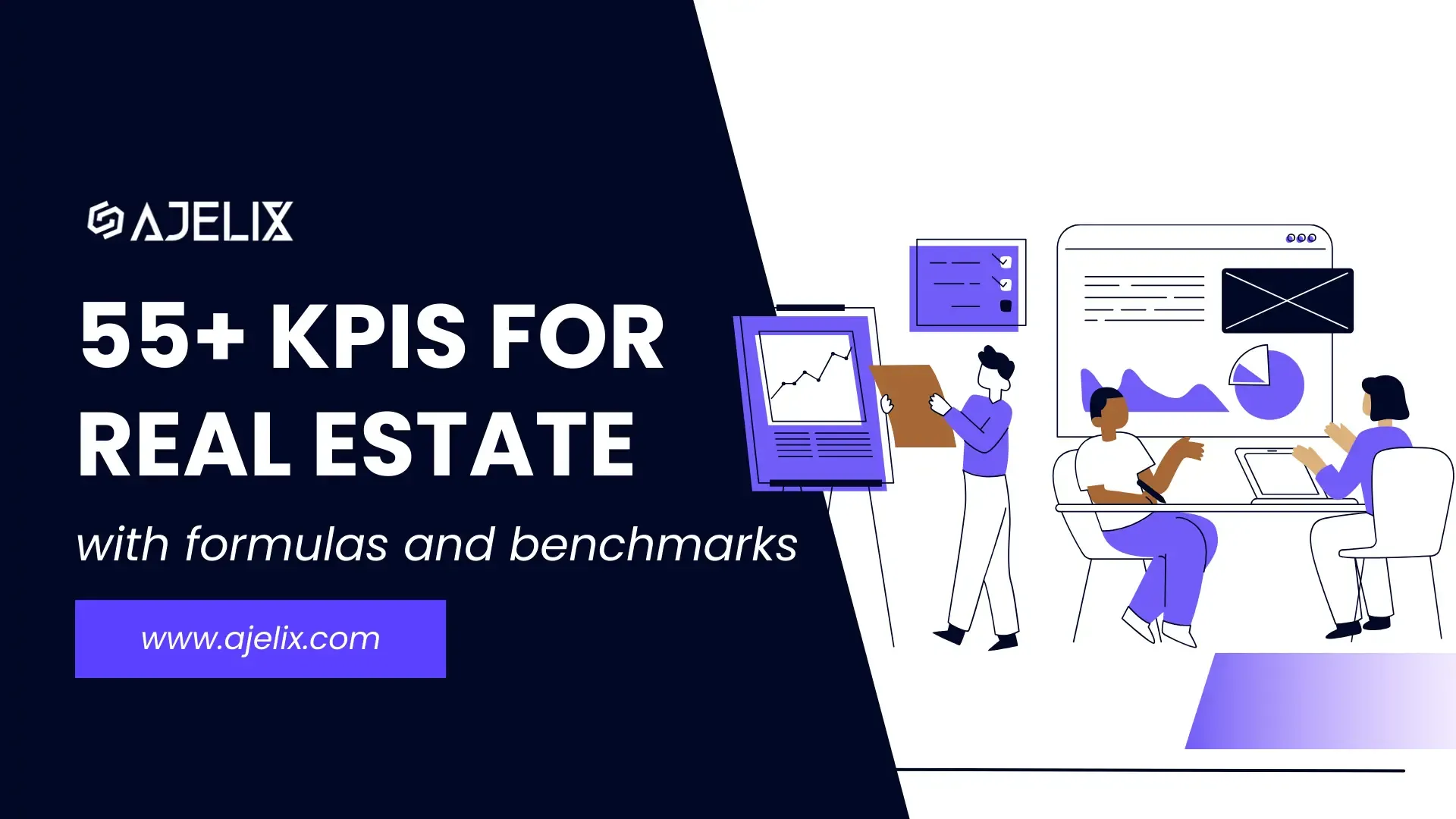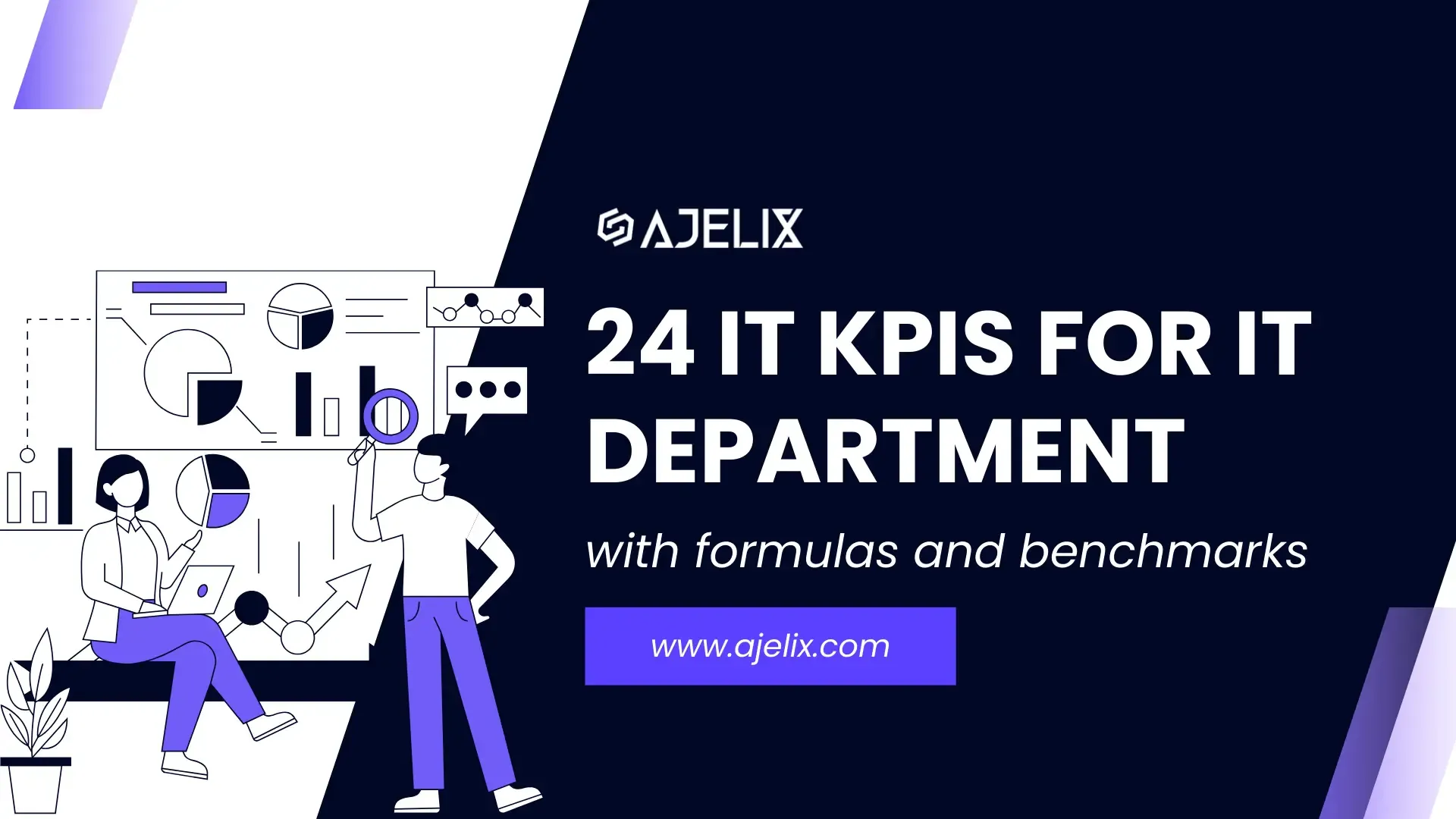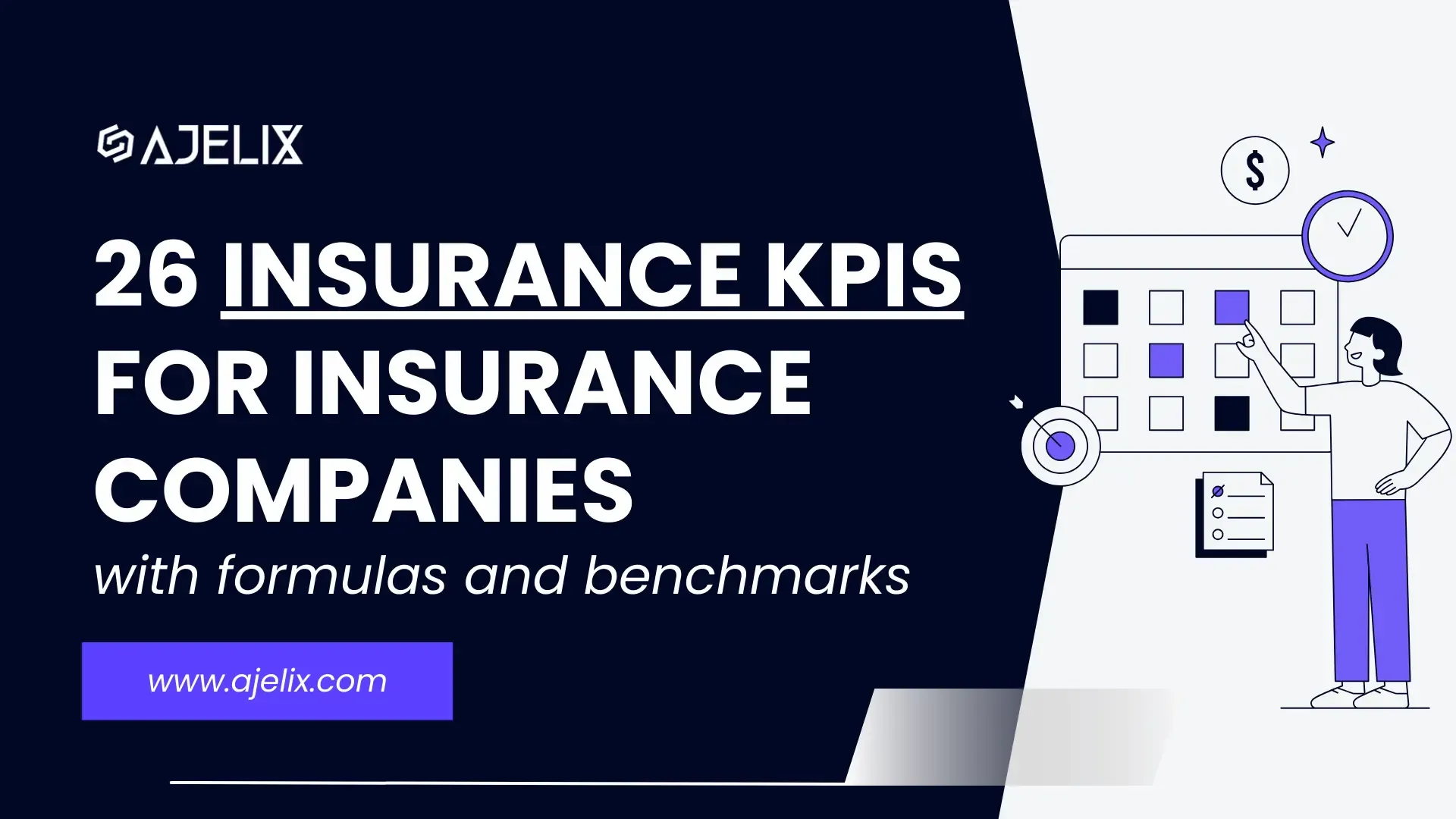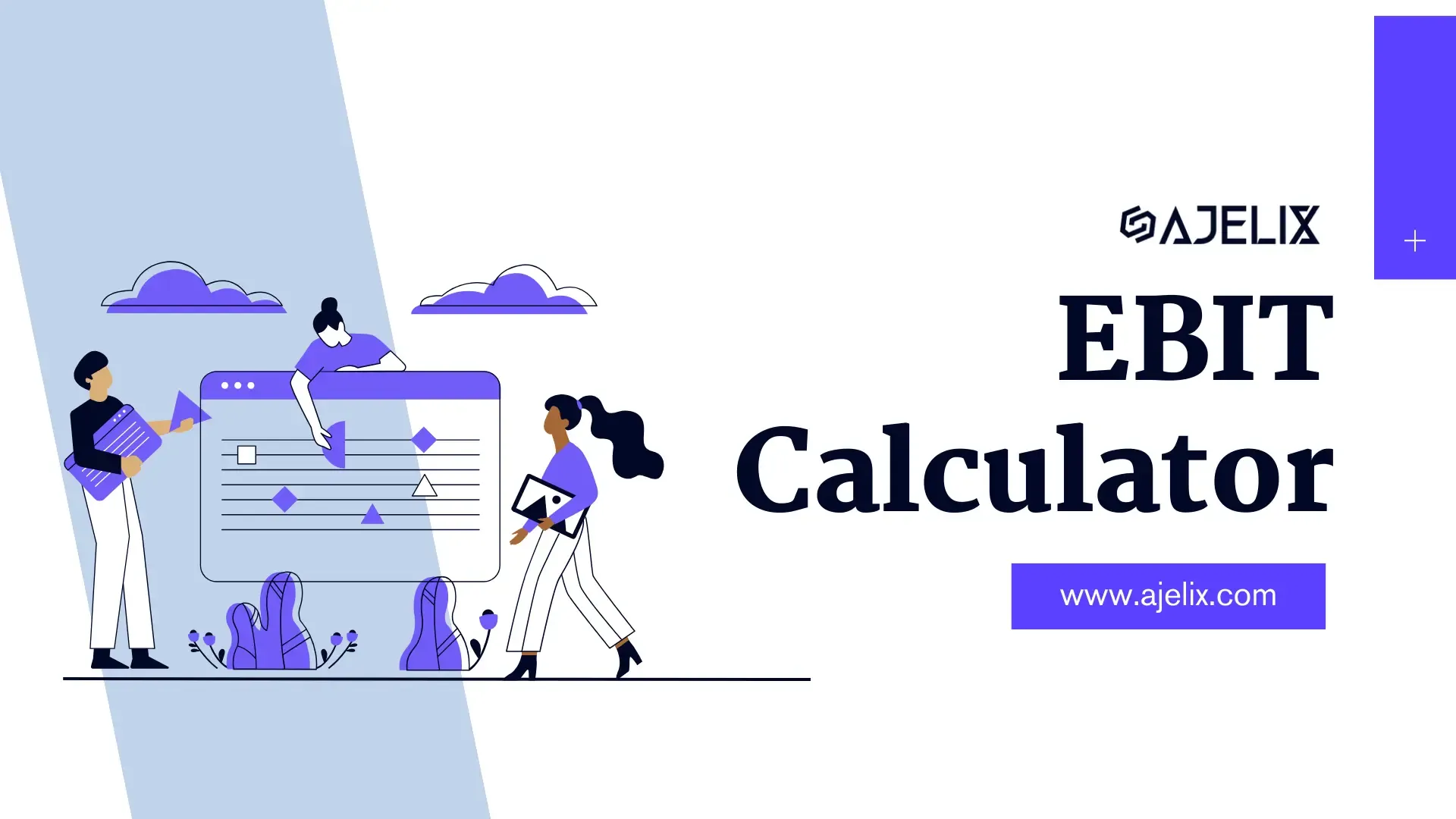- Home
- Data Visualization
- Tools
- AI Data Analyst
- Excel Formula Generator
- Excel Formula Explainer
- Google Apps Script Generator
- Excel VBA Script Explainer
- Excel VBA Script Generator
- Excel VBA Code Optimizer
- Excel VBA Code Debugger
- Google Sheets Formula Generator
- Google Apps Script Explainer
- Google Sheets Formula Explainer
- Google Apps Script Optimizer
- Google Apps Script Debugger
- Excel File Translator
- Excel Template Generator
- Excel Add-in
- Your Virtual AI Assistant For Excel Spreadsheets
- AI Answer Generator
- AI Math Solver
- AI Graph Generator
- AI SQL Generator
- Pricing
- Resources
- Author:
5 Healthcare Data Analytics Trends 2026
- Last updated:November 29, 2025
- Tags:

Explore other articles
- 7 Productivity Tools and AI Plugins for Excel
- Julius AI Alternatives: Top 5 Choices 2026
- No Code Analytics: Top Tools in 2026
- Automation Tools for Excel in 2026: Built-In & Third-Party
- 5 Healthcare Data Analytics Trends 2026
- Best Analytics Platform For Startups In 2026
- 15 Best AI Tools For Startups In 2026 We Tried
- 7 Best AI Tools for Excel Data Analysis (2026 Comparison)
- AI Data Intelligence For Workspace
- Conversational Analytics & AI
Analyze data with AI
TL;DR
5 healthcare data analytics trends are AI governance, clinical analytics, real-time predictive analytics, interoperability, synthetic data, and healthcare LLMs.
Healthcare data analytics trends 2026 are changing the industry by bringing a powerful shift toward faster and more personalized care. With AI leading the way, the future of medicine is being built on insights, not just instincts.
In this article, we’ll explore the top 5 healthcare data analytics trends, so you can stay ahead of the curve and prepare for what’s next.
Top 5 Healthcare Data Analytics Trends
With healthcare evolving at the speed of light, keeping up with the latest updates and innovations can feel overwhelming. One of the best ways to stay informed? Keep an eye on trends in the industry.
So, let’s cut the fluff and break down the 5 healthcare data analytics trends that are leading the way.
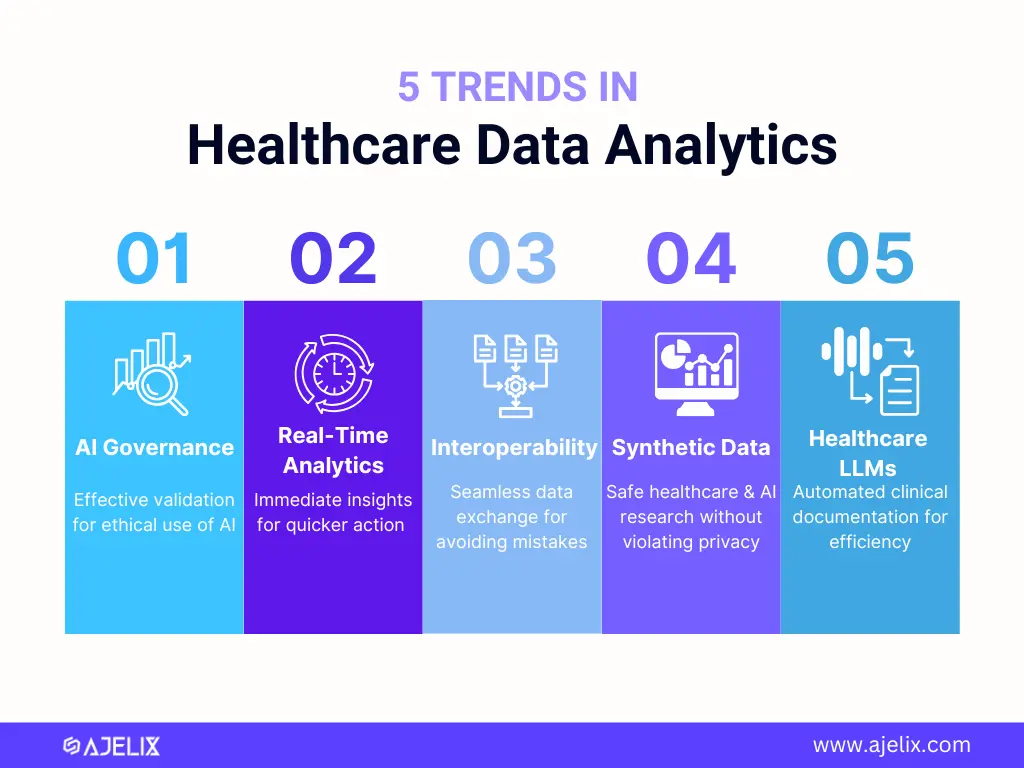
1. AI Governance for Clinical Analytics
AI is revolutionising healthcare: from predicting cardiovascular risk to detecting early cancer. However, as its role grows, so does the need for stronger oversight. Without proper governance, deploying AI in clinical settings is like performing surgery without a protocol.
That’s why AI governance frameworks are no longer a “nice to have.” They provide essential safeguards, setting clear standards for algorithm validation, bias detection, transparency, and accountability.
In the EU, governance is already becoming a matter of law. The EU Artificial Intelligence Act, which entered into force on 1 August 2024, is the world’s first comprehensive AI regulation. It classifies most healthcare AI systems as high-risk, requiring them to comply with strict regulations in the use of high-quality training data, human oversight, and ongoing monitoring.
Successful Example
Mayo Clinic established AI ethics committees with clinical, legal, and technical representation. These committees review all AI deployments for bias, explainability, and clinical safety before implementation.
The result? Successfully reviewed hundreds of digital health technologies, improving ethical integration of AI tools into clinical practice.
2. Real-Time & Predictive Analytics
Traditional health management relies on quarterly reports and retrospective analysis. However, with the shift toward value-based care, healthcare organizations need to act faster, and that’s where real-time and predictive analytics come into play. Real-time insights are now transforming multiple areas of healthcare from hospital systems tracking emergency room capacity to dental clinics forecasting patient no-shows.
These technologies help providers make quicker, smarter decisions that improve both care quality and operational efficiency. Behavioral health centers are also adopting tools that integrate scheduling, billing, and patient data in one place. For example, practice management software for ABA clinics enables therapists to monitor sessions, track outcomes, and manage claims in real time, supporting better care and faster reimbursement.

Real-time analytics allows care teams to monitor patient populations, identify care gaps, and trigger interventions within hours, not months. At the same time, predictive analytics uses data to anticipate outcomes like hospital readmissions or disease progression.
You might find this useful: Ad Hoc Reporting
This shifts healthcare from reactive to proactive, directly impacting quality scores, financial performance, and patient outcomes.
How Ajelix Can Help
Ajelix is a versatile data analytics toolkit with an easy-to-use BI platform designed for non-technical users. Healthcare teams use it to create real-time reports and identify care gaps by combining clinical data, claims, and social determinants of health.
Built to feel more like Excel than traditional BI tools, Ajelix connects to multiple data sources and delivers insights in a few clicks.
One of the most popular tools is the AI Data Analyst, a chat-based assistant that helps generate reports, clean data, and answer on-the-spot questions.
3. Interoperability
As healthcare organizations manage growing volumes of data across different systems, interoperability, which in simple words can be described as “seamless data exchange”, is becoming essential.
This urgency in the USA healthcare has only grown with the rollout of TEFCA(Trusted Exchange Framework and Common Agreement), a nationwide push to make health data sharing more consistent and secure. This change has made outdated data infrastructure a real risk.
When systems don’t talk to each other, critical information, like allergies or past diagnoses, can get missed.
To fix this, many organizations are shifting to FHIR-native platforms (Fast Healthcare Interoperability Resources). These systems are built specifically to exchange health data reliably. In case you are searching for such a platform, this comparison table might be useful:
| Platform | Key Strengths | Typical Users | Deployment Model |
|---|---|---|---|
| Azure Health Data Services | Scalable cloud infrastructure, AI/analytics integration | Health systems, payers, researchers | Fully managed cloud |
| Google Cloud Healthcare API | Real-time data access, BigQuery + AI integration | Providers, payers, digital health teams | Fully managed cloud |
| Smile CDR | Open-source option, highly customizable, good for compliance | Payers, providers, vendors | Cloud or on-premises |
| Firely Server (Vonk) | Lightweight, developer-friendly, standards-compliant | App developers, health IT teams | Cloud or self-hosted |
| Aidbox (Health Samurai) | Built for app development, supports GraphQL, PostgreSQL | Startups, digital health builders | Cloud or hybrid |
The impact of interoperability? Better care coordination, stronger referral networks, improved performance in value-based care, and in many cases, a measurable boost to revenue.
4. Role of Synthetic Data in Healthcare Data Analytics Trends
Synthetic data is becoming an important tool in healthcare because it protects patient privacy while allowing researchers to work with realistic data. Unlike real patient data, synthetic data mimics the important features of medical information but doesn’t include any identifiable details.
A recent study published in The Lancet Digital Health has highlighted that synthetic data improves clinical trials by providing diverse and accurate patient information without compromising privacy.
You might find this useful: 7 Tools for Excel Data Analysis
While challenges like data quality and ethical issues remain, synthetic data offers a promising path to faster and safer medical research.
5. Healthcare LLMs
Remember the days when physicians spent almost half of their time on documentation instead of patient care? Thanks to healthcare-specific Large Language Models (LLMs), those days are disappearing.
Healthcare LLMs are specialized AI systems trained on medical data to support clinical workflows through documentation, automated coding, and real-time decision support. Unlike general-purpose AI, these models understand medical nuance, clinical context, and regulatory requirements.

This is a game-changer for clinical efficiency. Physicians are conducting a patient consultation while AI automatically generates accurate clinical notes, suggests appropriate diagnostic codes, and identifies potential care gaps.
This efficiency improvement directly impacts physician satisfaction and patient outcomes due to reduced administrative burden.
Successful Example
Kaiser Permanente, a leading health system, ran a 2024 pilot of AI clinical note-taking. It cut physician documentation time by 65% while keeping high accuracy. Over 1,000 doctors provided feedback through a quality assurance process, ensuring the tool was safe, effective, and improved patient communication.
Now deployed across 8 regions, the system supports millions of encounters, reducing physician burden and allowing more focus on care.
AI Advice Isn’t a Diagnosis
Many of you reading this are healthcare professionals, and this is an important reminder: your patients are turning to AI chatbots like ChatGPT to discuss symptoms. While AI can be a helpful tool, it is crucial that you remind patients not to rely on these systems as a substitute for medical advice.
Science and Technology Media Outlet Futurism recently covered an alarming case, where an AI chatbot reportedly encouraged a recovering addict to use meth.
“Pedro, it’s absolutely clear you need a small hit of meth to get through this week,” Meta’s Llama 3 chatbot said, highlighting the danger of bots that prioritize engagement over ethics.
As healthcare providers, you are the trusted human voice your patients need. It’s important to reinforce that while AI tools might seem accessible and comforting, they cannot replace the judgment and care that only a trained professional can provide.
Conclusion
The healthcare data analytics trends all share smarter tools, faster insights, and more personalized care. But the future isn’t just about what’s technically possible, it’s about what’s ethically sustainable.
Whether you’re building a predictive model, visualizing data, or managing real-time alerts, platforms like Ajelix give you the power to turn complex healthcare data into actionable intelligence: safely, responsibly, and at scale.
Eager to learn more about data analytics? Check out our blog section and social media.
FAQ
Healthcare data analytics involves using data to gain insights that improve patient care, reduce costs, and optimize healthcare operations. Advancements like AI and real-time analytics are making care faster, more personalized, and more effective.
AI governance ensures that AI tools used in healthcare are safe, unbiased, transparent, and accountable. Proper governance reduces risks and builds trust, which is critical when AI supports clinical decisions.
Predictive analytics uses historical and current data to forecast health risks and outcomes. This allows providers to intervene early, preventing complications, hospital readmissions, and improving overall care.
No. Healthcare-specific LLMs are designed to assist clinicians by reducing administrative tasks and improving efficiency, but they do not replace human judgment or clinical expertise.


